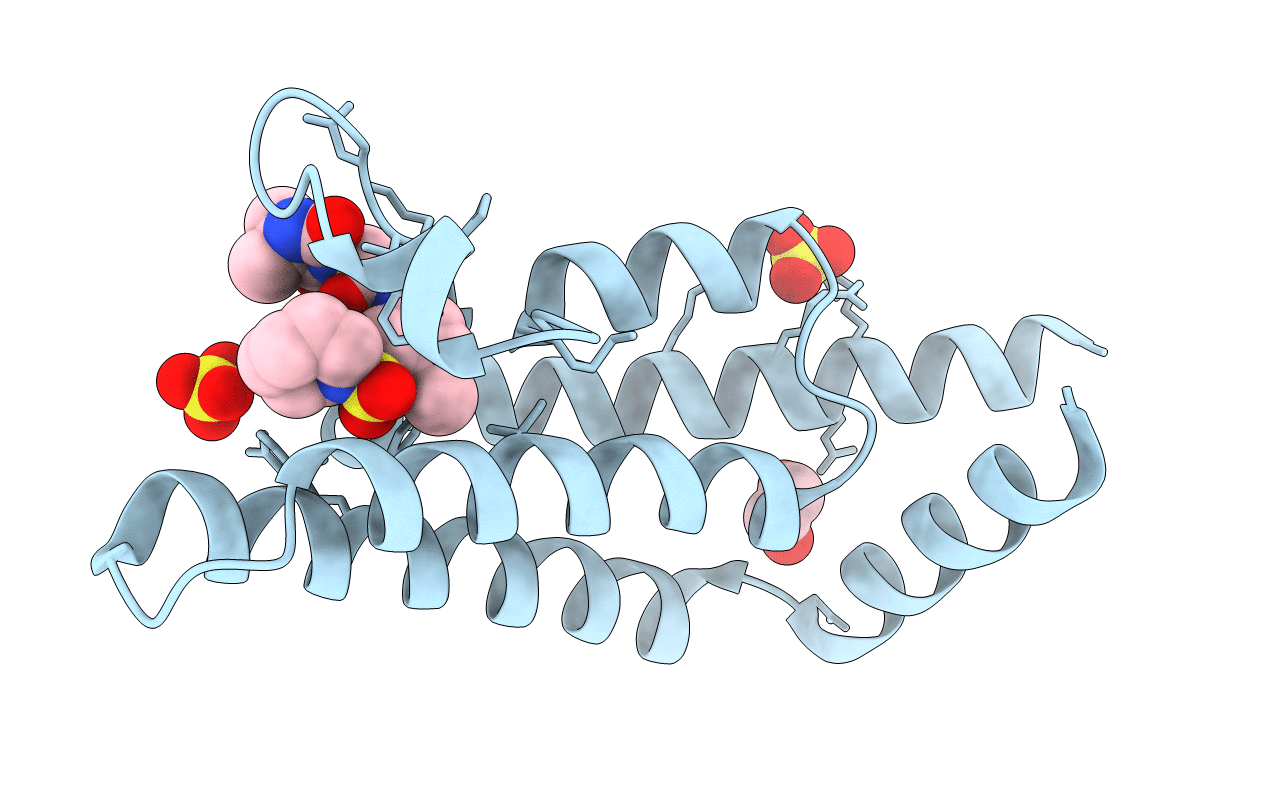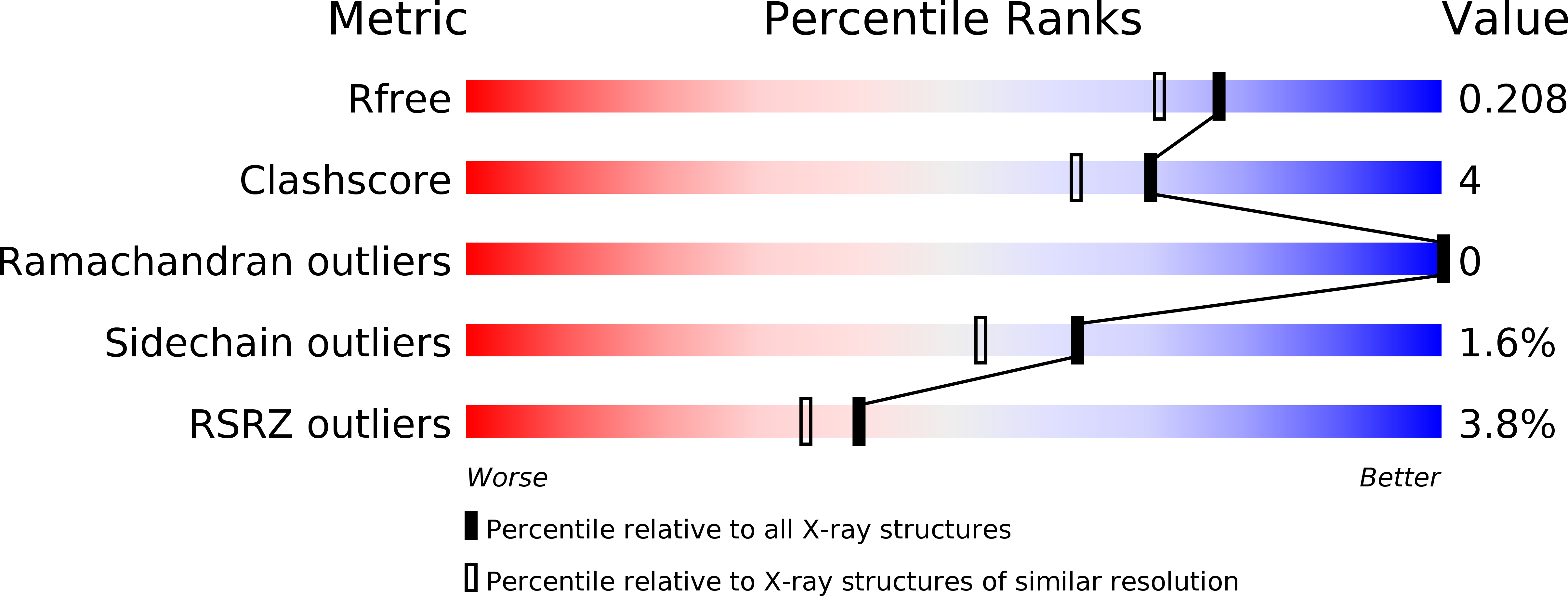
Deposition Date
2019-06-30
Release Date
2019-08-21
Last Version Date
2024-05-15
Entry Detail
PDB ID:
6S57
Keywords:
Title:
Crystal structure of human ATAD2 bromodomain in complex withN-(3-(azepan-1-ylsulfonyl)-4-methylphenyl)-2-(4,4-dimethyl-2,5-dioxoimidazolidin-1-yl)acetamide
Biological Source:
Source Organism:
Homo sapiens (Taxon ID: 9606)
Host Organism:
Method Details:
Experimental Method:
Resolution:
1.82 Å
R-Value Free:
0.19
R-Value Work:
0.17
R-Value Observed:
0.17
Space Group:
P 65 2 2


